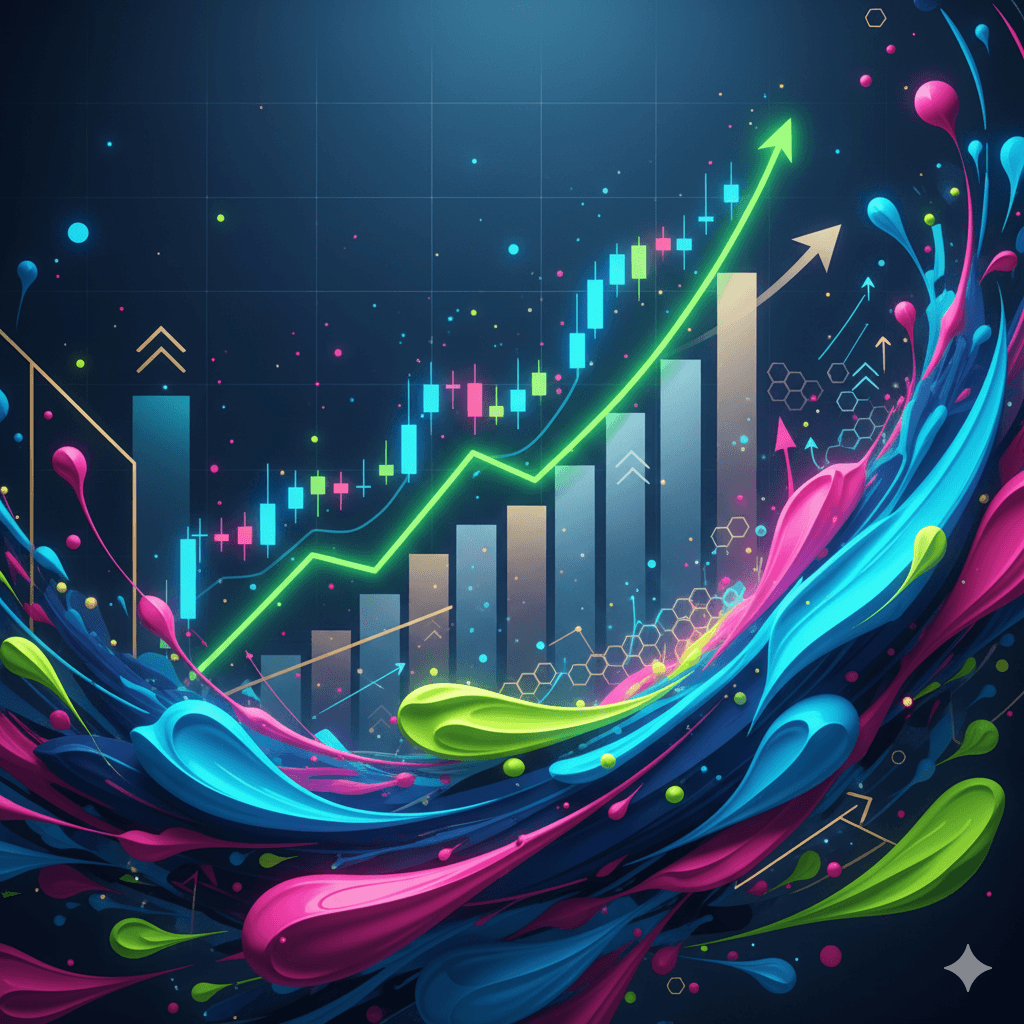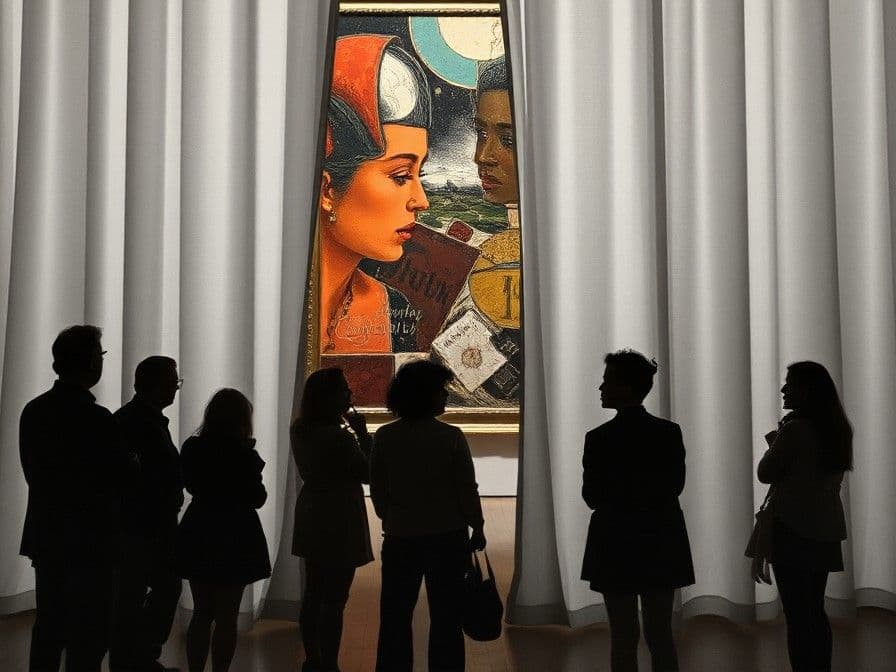
Investing in Contemporary Art: A Comprehensive Guide

Investing in contemporary art offers unique financial and cultural rewards. Unlike stocks or bonds, art provides portfolio diversification, significant appreciation potential, and personal enjoyment. Discover the advantages, risks, and strategies for navigating this vibrant asset class.
Investing in contemporary art has emerged as an increasingly popular alternative asset class, attracting individuals, institutions, and even governments seeking to diversify their portfolios. Unlike traditional investments such as stocks, bonds, or real estate, art offers a unique combination of financial returns, cultural significance, and personal enjoyment. The rise of the global art market, driven by economic growth in emerging markets, technological advancements, and a growing base of collectors, has made contemporary art one of the most vibrant and dynamic sectors within the investment landscape.
However, investing in art is not without risks. The market can be highly speculative, opaque, and influenced by trends, tastes, and external economic factors. This guide aims to provide a detailed examination of contemporary art as an investment, discussing its advantages, risks, key market players, and strategies for building a successful art collection that can generate long-term returns.
What is Contemporary Art?
Contemporary art refers to artworks produced by living artists or those who have created work from the mid-20th century to the present day. Unlike historical art, which often carries the weight of artistic movements and established narratives, contemporary art is characterized by its diversity in style, medium, and subject matter. From abstract painting to digital media, conceptual installations, and street art, contemporary artists push the boundaries of creativity and reflect the complexities of modern life.
Notable contemporary artists include figures like Jeff Koons, Damien Hirst, Yayoi Kusama, and Banksy, whose works often command astronomical prices at auction. These artists, along with many others, have transformed the art market, attracting the attention of both passionate collectors and savvy investors.
Why Invest in Contemporary Art?
1. Portfolio Diversification
One of the main reasons investors turn to contemporary art is to diversify their portfolios. Traditional investments like stocks, bonds, and real estate are subject to the fluctuations of the financial markets. Art, on the other hand, is considered a non-correlated asset, meaning its value does not directly move in sync with the stock market or broader economy. As such, contemporary art can serve as a hedge against inflation, currency fluctuations, and economic downturns, helping to stabilize an investment portfolio.
2. Appreciation Potential
The contemporary art market has experienced significant growth in recent years, with high-profile auctions regularly setting new records. The total value of the global art market was estimated at $67.8 billion in 2022, with contemporary art accounting for a substantial portion of that figure. Some works by well-established contemporary artists have appreciated in value by thousands of percent over a few decades.
For instance, works by Jean-Michel Basquiat have seen tremendous appreciation since his death in 1988. A painting by Basquiat sold for $20,900 in 1984 but fetched $110.5 million at auction in 2017. Such cases of dramatic appreciation can result in significant financial rewards for those who invest early in an artist’s career or buy works that gain cultural significance over time.
3. Cultural and Aesthetic Value
Unlike stocks or bonds, contemporary art offers a tangible asset that provides aesthetic pleasure and intellectual stimulation. Owning a piece of art allows investors to engage with culture, ideas, and creativity, while also showcasing their personal tastes and values. For many collectors, the emotional and cultural return on investment can be as important as the financial return.
Investing in art also allows individuals to support living artists and contribute to the cultural landscape. Some investors enjoy the sense of personal satisfaction that comes with nurturing an artist’s career, supporting exhibitions, or donating works to public institutions.
4. Tangible Asset with Durability
Art is a physical asset, unlike stocks, which are intangible. While art can depreciate due to damage or deteriorating trends, it is far more durable than financial instruments that can become worthless in extreme market conditions. With proper care and conservation, art can last centuries and retain its value or even appreciate in future markets. Owning tangible assets also gives a sense of security, especially during economic turbulence when the reliability of paper assets is questioned.
5. Social Status and Networking
Owning contemporary art can also offer non-financial benefits, such as social prestige and access to exclusive networks. The art world is often viewed as elite, with collectors and patrons invited to gallery openings, art fairs, and private events. Collectors who amass significant collections can gain recognition in the art world and may even be able to influence trends or promote specific artists.
6. Tax Advantages
There can also be tax advantages to investing in art. In some countries, capital gains taxes on art sales are lower than taxes on financial assets. Furthermore, donating artwork to museums or other charitable organizations can provide significant tax deductions. However, the tax implications of art investment vary greatly depending on the jurisdiction, so it’s important to consult with financial and tax professionals to optimize potential benefits.
Risks and Challenges of Investing in Contemporary Art
While the potential rewards of investing in contemporary art can be significant, there are also notable risks and challenges to consider.
1. Market Volatility and Liquidity Issues
The art market is notoriously illiquid compared to other financial markets. Unlike stocks or bonds, which can be sold relatively easily, selling an artwork requires finding a willing buyer, which can take time. Additionally, transaction costs can be high, with auction houses and dealers charging commissions of 10-20% or more. This can eat into profits, particularly if the artwork does not appreciate significantly over time.
Moreover, the art market is highly volatile and unpredictable. Trends in taste and fashion can change rapidly, and the value of an artwork can fluctuate depending on the artist’s reputation, the condition of the piece, and external factors such as economic conditions or cultural events.
2. Subjectivity in Valuation
Unlike stocks, which can be valued based on company earnings and financial metrics, art is a highly subjective asset. Its value is determined by factors such as the artist’s reputation, historical significance, and market demand, which can be difficult to quantify. This makes art a speculative investment, with prices often driven by emotion, hype, and perception rather than objective criteria.
3. Forgery and Fraud
The art market has long been plagued by issues of forgery, fraud, and misrepresentation. Unscrupulous dealers and counterfeit artworks can deceive even experienced collectors, resulting in significant financial losses. For example, the infamous Knoedler Gallery scandal in New York, which sold over $80 million worth of fake artworks, highlighted the risks of buying from unreliable sources.
To mitigate these risks, it is essential to conduct thorough due diligence, work with reputable galleries and dealers, and seek expert advice on authenticity and provenance before making a purchase.
4. Storage and Maintenance Costs
Artworks require proper storage, maintenance, and insurance to preserve their value. High-value pieces must be stored in climate-controlled environments, protected from sunlight, humidity, and physical damage. The costs of insurance, security, and conservation can be substantial, particularly for larger collections. Failure to properly care for an artwork can result in damage and depreciation, reducing its market value.
5. Cultural Sensitivity and Shifting Tastes
Contemporary art, by its nature, often challenges societal norms and addresses politically or culturally sensitive issues. This can result in shifts in public perception and demand. For instance, certain artworks that were once considered groundbreaking might later be viewed as problematic or outdated. Alternatively, artworks dealing with controversial topics may face censorship or public backlash, potentially affecting their marketability and value.
Key Players in the Contemporary Art Market
To successfully invest in contemporary art, it is essential to understand the key players and institutions that shape the market.
1. Auction Houses
Major auction houses, such as Sotheby’s, Christie’s, and Phillips, play a crucial role in determining the value of contemporary art. These institutions host high-profile auctions where artworks by leading artists are sold to the highest bidder. Auction results are often used as benchmarks for an artist’s market value, and record-breaking sales can drive up demand and prices for similar works.
2. Galleries and Dealers
Commercial galleries represent artists and help promote and sell their work. Reputable galleries often have exclusive relationships with certain artists and are instrumental in building their careers. Art dealers act as intermediaries between buyers and sellers, facilitating private sales and offering expert advice on pricing, authenticity, and market trends.
Working with trusted galleries and dealers is crucial for investors looking to acquire high-quality works with potential for appreciation.
3. Art Fairs
Art fairs, such as Art Basel, Frieze, and The Armory Show, provide opportunities for collectors to view and purchase works from a wide range of galleries and artists. These events attract international buyers, curators, and critics, making them important venues for discovering emerging talent and staying up-to-date on market trends.
4. Online Platforms
The rise of online marketplaces and digital platforms has democratized access to the art market, allowing investors to buy and sell works without the need for traditional intermediaries. Websites like Artsy, Artnet, and Paddle8 offer online auctions, price databases, and other tools that can help investors make informed decisions.
While online platforms can provide convenience and transparency, it is still important to verify the authenticity and condition of artworks before making a purchase.
5. Advisors and Consultants
Art advisors and consultants offer expert guidance to collectors and investors, helping them navigate the complexities of the art market. These professionals provide insights into market trends, assist with sourcing and valuation, and offer advice on portfolio building and risk management. Working with an experienced advisor can help investors make more informed and strategic decisions, particularly in a market as opaque and speculative as contemporary art.
Strategies for Investing in Contemporary Art
For those looking to invest in contemporary art, several strategies can help maximize returns and mitigate risks.
1. Focus on Emerging Artists
Investing in emerging artists can offer significant upside potential, as their works are often priced more affordably compared to established names. By identifying promising talent early in their careers, investors can acquire works that may appreciate substantially as the artist gains recognition. However, this strategy requires thorough research, as many emerging artists may not achieve long-term success.
2. Diversify Your Collection
Just as with traditional investments, diversification is key to reducing risk in an art collection. This can involve acquiring works from artists at different stages of their careers, in various mediums, and across different styles or regions. Diversifying across different price points can also help balance the portfolio and reduce the impact of volatility in any single segment of the market.
3. Buy What You Love
Since art is a highly speculative and illiquid asset, it is important to buy works that you personally appreciate and enjoy. While financial returns are a key consideration, the emotional and cultural value of owning art should not be overlooked. If a work does not appreciate as expected, owning something you love ensures that the investment still holds personal significance.
4. Stay Informed on Market Trends
Keeping up with market trends, artist exhibitions, and auction results is essential for making informed decisions. Subscribing to art publications, attending gallery openings and art fairs, and following the activities of major auction houses can provide valuable insights into the market’s direction.
5. Work with Professionals
Given the complexities of the art market, working with art advisors, consultants, and dealers can provide invaluable expertise and help avoid costly mistakes. These professionals can offer guidance on authenticity, pricing, provenance, and market trends, ensuring that investors make well-informed decisions.
Conclusion
Investing in contemporary art offers a unique blend of financial, cultural, and emotional rewards. While the market can be volatile and speculative, those who approach it with research, patience, and a passion for art can achieve significant returns. By understanding the key players, risks, and strategies involved, investors can navigate the complexities of the contemporary art world and build collections that not only appreciate in value but also enrich their lives.
Written by


Behind the Curtain of the Art World: How Galleries Select Artists
